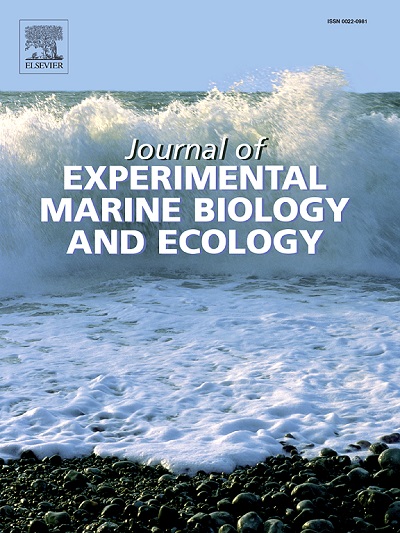Effects of suspended sediment on survival, growth, and nutritional condition of green-lipped mussel spat (Perna canaliculus, Gmelin, 1791)
IF 1.8
3区 生物学
Q3 ECOLOGY
Journal of Experimental Marine Biology and Ecology
Pub Date : 2025-01-01
DOI:10.1016/j.jembe.2024.152074
引用次数: 0
Abstract
Suspended sediment is a significant current threat to coastal ecosystems in many parts of the world. Sediment runoff into the ocean is increasing due to numerous human activities, such as agriculture, deforestation, construction, and mining. Additionally, climate change is impacting local weather patterns, with many regions experiencing marked changes in the frequency and extent of precipitation. Extreme weather events, such as cyclones, can increase suspended sediment (SS) in coastal waters by up to 100-fold. This rapid change in SS can negatively affect filter-feeding bivalves by diminishing their feeding efficiency, often preventing feeding until the sediment settles. In New Zealand, juveniles of the green-lipped mussel (Perna canaliculus) have rudimentary structures for capturing and sorting food particles from the seston, which are prone to clogging and damage. In this study, the effects of a range of SS concentrations (0–1250 mg L−1) on the survival, growth, and nutritional condition of juvenile green-lipped mussels (1–2 mm SL) were determined over two time scales (5 and 30 days) in controlled laboratory experiments. Neither mortality nor nutritional condition were impacted by SS. However, the presence of SS positively affected growth (p < 0.05) and mussel settlement location (p < 0.01) at both time scales. The results show that, under these conditions, SS levels ≤1250 mg L−1 are not apparently harmful to P. canaliculus spat and may even be advantageous.

悬浮沉积物对绿唇贻贝生存、生长和营养状况的影响(Perna canaliculus, Gmelin, 1791)
悬浮沉积物是目前对世界许多地区沿海生态系统的重大威胁。由于许多人类活动,如农业、森林砍伐、建筑和采矿,流入海洋的沉积物正在增加。此外,气候变化正在影响当地的天气模式,许多地区正在经历降水频率和范围的显著变化。极端天气事件,如气旋,可以使沿海水域的悬浮沉积物(SS)增加多达100倍。SS的快速变化会对滤食性双壳类产生负面影响,降低它们的取食效率,通常在沉积物沉淀之前无法取食。在新西兰,绿唇贻贝(Perna canaliculus)的幼鱼有基本的结构来捕获和分类来自海藻的食物颗粒,这很容易堵塞和损坏。在本研究中,在对照实验室实验中,研究了SS浓度范围(0-1250 mg L−1)对绿唇贻贝幼鱼(1 - 2 mm SL)存活、生长和营养状况的影响,时间尺度分别为5天和30天。SS对死亡率和营养状况均无影响。然而,SS的存在正影响生长(p <;0.05)和贻贝沉降位置(p <;0.01)。结果表明,在此条件下,SS浓度≤1250 mg L−1对小管贝没有明显的危害,甚至可能是有利的。
本文章由计算机程序翻译,如有差异,请以英文原文为准。
求助全文
约1分钟内获得全文
求助全文
来源期刊
CiteScore
4.30
自引率
0.00%
发文量
98
审稿时长
14 weeks
期刊介绍:
The Journal of Experimental Marine Biology and Ecology provides a forum for experimental ecological research on marine organisms in relation to their environment. Topic areas include studies that focus on biochemistry, physiology, behavior, genetics, and ecological theory. The main emphasis of the Journal lies in hypothesis driven experimental work, both from the laboratory and the field. Natural experiments or descriptive studies that elucidate fundamental ecological processes are welcome. Submissions should have a broad ecological framework beyond the specific study organism or geographic region.
Short communications that highlight emerging issues and exciting discoveries within five printed pages will receive a rapid turnaround. Papers describing important new analytical, computational, experimental and theoretical techniques and methods are encouraged and will be highlighted as Methodological Advances. We welcome proposals for Review Papers synthesizing a specific field within marine ecology. Finally, the journal aims to publish Special Issues at regular intervals synthesizing a particular field of marine science. All printed papers undergo a peer review process before being accepted and will receive a first decision within three months.

 求助内容:
求助内容: 应助结果提醒方式:
应助结果提醒方式:


